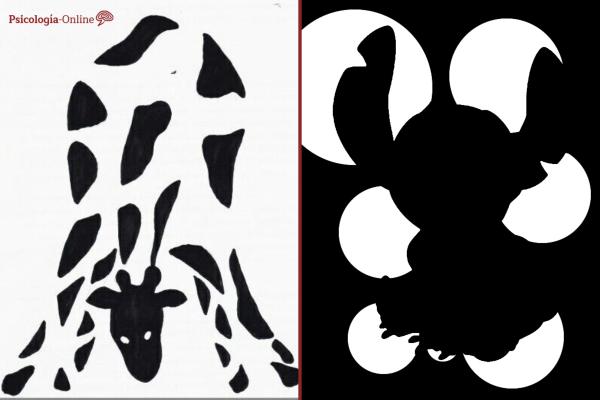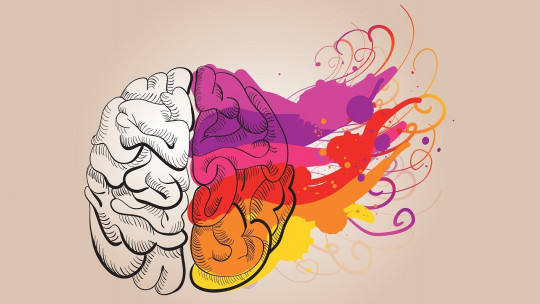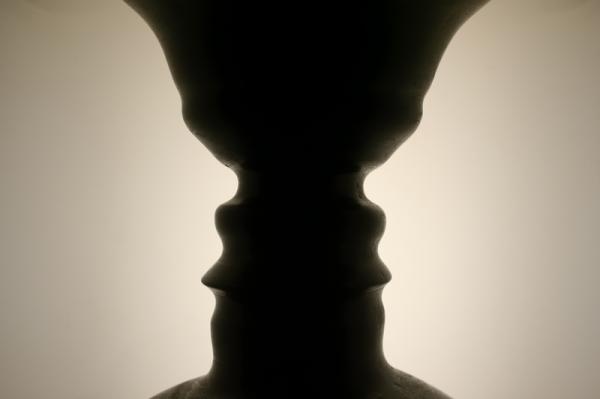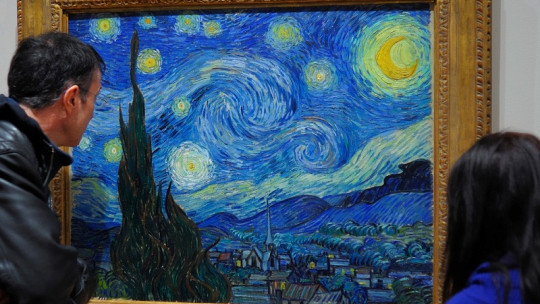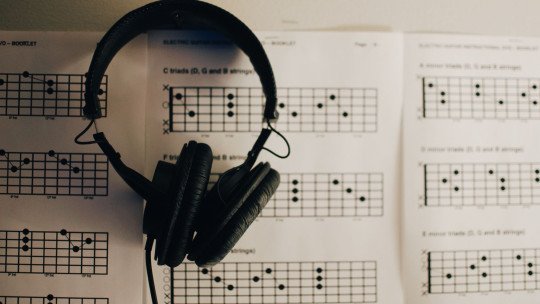As one of the many tasks of man, Music in its many and varied forms has expressed not only a social need but one of the most transcendent aspects of Human Creativity. Just like the printed image of the great “Gestalt” of the Creator, who would have carried out his universal work from the same Word. That Art has as its daughters all pictorial, sculptural, literary, musical, theatrical, dancing, etc. creations. It is an indubitable fact since the beginning of time in which Man was “thrown into the world” in Kierkegaard’s words and found himself involved in a Nature that has formed a substantial part of his Life since then and forever. The entire Universe forms, according to my particular experience, a great constellation of rhythms, melodies and harmonies as if it were a great eternal concert.
In this PsicologíaOnline article, we talk about the theoretical aspects of creativity.
Creativity: definition and importance
The creativity, being one of the most sophisticated and structured psychic processes, allows the realization of the most different, complex and transcendent human activities. In this creative process our entire personality is involved.
Due to its articulation with human nature, creativity is a indispensable source from which it is possible to obtain to put into practice in the most concrete way possible all that wealth of resources that are “dormant” in our psyche. Perhaps we should resort to these potential resources at all times of our lives in which changes of a highly significant content occur.
The creation or the act of creating It is an essential characteristic of the human being. This is one of the mysteries that lie at the bottom of our unconscious. It will be in creation in which “something” that was not becomes, and it will be man who has the power to create and modify the nature of the things that will serve as his daily and transcendent “sustenance.”
When we analyze the history of creativity, we marvel at the enormous progress that is manifested in the 20th century: atomic theories, relativity, quantum mechanics, nuclear physics, genetics, immunology, cybernetics, radio astronomy. In these discoveries man realizes the intimate nature of things, which, as always, are never as they fully appear to our senses. When he creates himself, man approaches the essences, but, when he repeats himself, he only reaches a mere appearance.
It will be in the work of art as such (art from the Latin “artao”: joining parts), it will cosmically (orderly) unite everything that appears chaotic to man. In this way, Art (although not every time) shows that organizing aspect, that is, the tendency towards balance and harmony innate in human consciousness. We could also speak of “another order” or “a new order”, when the work of art or technique – since both are complementary – presents forms that deviate from classical conceptions. The uncertainty that characterizes these end of the century also presents here in its unique credentials.
All human creation advances in the sense of increase order and order the uneven even when certain disorders give us so much aesthetic pleasure. Human creation develops and would develop in the sense of giving meaning to life.
Nevertheless, creativity does not develop constantly< There are certain inaccuracies in its emergence. There are historical times in which creativity is deeper and others in which it does not appear. In this sense, it could be said that creativity, both in the creator and in historical creation, advances in leaps. Leaps of an epistemological nature. These can be observed both in the creation of the technique and in artistic creation, whether musical, literary, or pictorial.
One creation follows another as in a necklace of true pearls, between which there is a necessary time-spatial separation. Your unit will give you the veracity and certainty of its contents.
It will be in the current human creativity where we will find these four characteristics:
- They are of a high and complex level,
- almost all the creators are dead,
- All these changes affect a part of human nature and
- it grows unevenly (our physics would be better than Aristotle’s, but contemporary sculpture would not surpass classical sculpture). The music of Mozart, Beethoven or Brahms retains its organic and structural validity until these very times in which we live.

Goals
Taking into account some and other factors stated above, we can consider this article as important for all that activity in which technique and artistic factors are brought together. We have proposed for the moment four substantial objectives:
- Reflect on one’s own creative capacity, knowing, witnessing and acting in accordance with what each person can and wants to do. Power and wanting are inextricably related.
- Promote authentic creativity, bringing together the own innate resources that each human being possesses, demystifying the easy resources of plagiarism and copying.
- Propose a mode of individual and group creativity, taking into account not only the needs of the creator but also those of the historical moment in which he or she lives.
- Establish the recovery of ethics that every creative act proposes when it is authentic and at the service of the Common Good.
Music is where creativity seems to have been most strongly incarnated. Music is made in all the towns of the world. Music, both popular and secular, as well as religious, both accompanying the continuous development of Humanity.
Theoretical aspects of Creation/Creativity
Since time immemorial, Creation has occupied the mind of man in a worrying way. Questions about Creation have always raised all kinds of questions in Humanity. Thus, both myths, legends and fantastic interpretations about when, why and for what purpose was man created has generated a hermeneutical beyond that has also been dealt with by all the sciences in accordance with their fields of research.
But it will be religion who from the beginning has had Creation as the starting point of everything created. Creation that has not been finished, but continues in a deep process of re-creation. Creativity will account for this process of re-creation.
In our opinion, the Creation will correspond to a divine plan and the Creativity with a human plan In this way, we delimit the planes of application of both words, although we want to make it clear that Creativity actually emerges from Creation itself.
But to access Creativity in accordance with an articulation that I developed in Sports Psychology, we will use the specialized domain of human science This is also possible in other areas of applied psychology.
To this end, the most sincere method will be to find solid foundations by gathering the greatest amount of information available based on that aphorism that Husserl proposes, that is, “return to the things themselves.” For this, if we go through history, throughout its length, we will find men who have made contributions of exceptional importance in the various fields of action of our species. Artists, technicians, visionaries, innovators in all areas have left firm testimonies of the high symbolic capacity that humans possess and that, in itself, marks the abyss between what is clearly human and the intended evolution from the animal species, even when this is ascertainable. It is obvious that if we all share this world, we have similar “things” to inhabit it. But, the fact that we call our neuro-vegetative system that way, and from time to time we find humans whom we call, not without a certain prejudice, “vegetables”, in very little time we can assimilate a vegetable to the remarkable and wonderful “machine” which is the man. Obviously vegetables have their own thing! And what can we say about trees, our oldest and most serene friends!
He act of creating is a essentially human characteristic and only man can carry out this infinitely creative act that even today is presented to us as a kind of mystery due to its meaning and its relationship with the deepest thing we possess, our transcendence.

The Word and the gesture of Creation
Be through words or through creative gestures that an individual or group of people make the call creative act, which from our position, we will say “creative act”. It is through this typically human act that something that previously did not exist is given birth, or is discovered in a different form. This act, as shown by Anthropology, has a structural and symbolic characteristic and is registered in the human domain.
But something happened to the “ancients”, those who still show us their culture today. What is possible to observe, giving rise to different interpretations; It is the fact that, as D. Morris (1989) points out, they are “remaining beings.” Their culture has not advanced. But, we must ask ourselves, will it be necessary?
When we approach these “primitive” cultures with due respect, we discover that these “remainers”, who have been isolated and even held back by the so-called civilization, have invented lifestyles, languages, art, cults, which, when carefully observed, present a fascinating degree of originality.
Taking into account that our planet is approximately three million years old, humanity has made a vast and profound history in a very short time. Is it because that symbolic power that we men possess, allows it? If this symbolic power is so rich, how can its immediate consequence not be, creativity?
The fact of that remarkable discovery that man represents the universe itself with his uniqueness, having been created with the same matter that the universe possesses. At this point would it be possible to think of man as the result of an unlikely succession of coincidences? Wouldn’t we be here within one of the many myths that it was necessary for certain scientists to prove his own atheism?
Might not man be a probable and logical manifestation, born from an intelligent and orderly “process”? P. Putnam (The future of Land Based on Nuclear Fuels, 1950) has calculated that if our species came from a couple that had lived ten thousand years before Christ and had been growing regularly at a rate of 1 percent per year, the mass of human flesh would form a sphere several thousand light-years in diameter. It is obvious that this is an arithmetic calculation, but it gives a good image of the expansion properties that living matter has, although when this type of calculations seem paradoxical and absurd to us.
On the other hand, why are biologists driven to say that organisms are extremely unlikely objects, that evolution is a system that generates high degrees of improbability? Could this not also be a mythical necessity at the service of a fashion paradigm?
The theories
According to most of the theories prevailing in antiquity, matter once created would degrade until an end (“Eschatón”) in which it would die. These investigations were always carried out in closed systems and at the molecular level, so they were subject to large errors in results. These processes gradually inspired formulas such as the one in which “nothing is created, nothing is lost, everything is transformed.”
This vision that above all has characterized the last century has been substantially modified in light of the research and discoveries of the 20th century. Radioactivity, the theory of relativity, quantum mechanics, nuclear physics, cybernetics, astronomy, etc., have each been able to reveal in their own way that energy is not created or lost nor that there really is a degradation of the matter of the universe.
On the other hand, according to A. Ducrop (Le roman de la matiere1970) clarifies that: “The energetic transactions that take place at the fine, atomic, corpuscular, infracorpuslar levels, are governed by what cybernetics calls positive feedback.”
In short, the great law of the universe will be not a degradation, but a regular appraisal of its substance.
The subject is called to give rise to increasingly evolved associations. At the beginning of the chain, there were the particles. At the other end, we will find life. Cybernetics will be the architect of evolution.
This life is observed by H. Brown (The Challenge of Man’s Future1954) as: “if quantitatively life forms nothing more than an excessively thin film on the surface of the planet that supports it, however, it has existed throughout most of the history of the Earth and qualitatively the human nervous system represents the most high observable organization of matter”
It was also in this century that the image of Freud, With his discovery of the laws that regulate unconscious processes, he maintained an overdetermination of these in all our behavior. To this extreme position was added that of Marx who in turn believed he discovered that another deterministic causality emerged from economic relations. Each in their own way and having those authors who also adhered to this radical position, we observe that all of them believed they found in deterministic principles the knowledge of all the causes of a phenomenon for which we would be in a position to predict it absolutely. This deterministic principle has been put in parentheses from the theories of Einstein, Heisenberg and Wiener What an important comparison we could make between these scientists and the musical creations of Schonberg, Dallapicola, Webern, Honneger and many others who introduced new paradigms that suggested the beginning of new ways of listening. Everything would seem to indicate that human creation (creativity) develops in one sense: grouping and increasing the various orders in which Life itself manifests itself. Music is a constant witness to the change of times and in this way it manifests itself in different structural modifications, to which the “ear” should become accustomed as several listeners of trills who were not considered very “holy” became accustomed in Beethoven’s time. This unfinished way of ending an article is not random, but also motivated by the need for it to remain as indefinite and vacillating as the vibration of the Universe, which in its “useless” expansion clearly shows that Creation, at least, It has not yet finished being.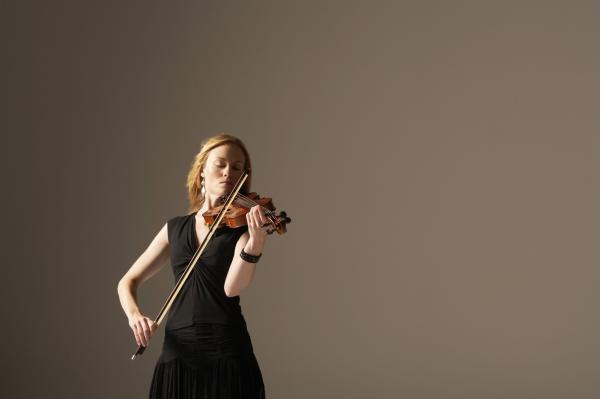
This article is merely informative, at PsychologyFor we do not have the power to make a diagnosis or recommend a treatment. We invite you to go to a psychologist to treat your particular case.
If you want to read more articles similar to Theoretical aspects of creativity we recommend that you enter our Cognitive Psychology category.

